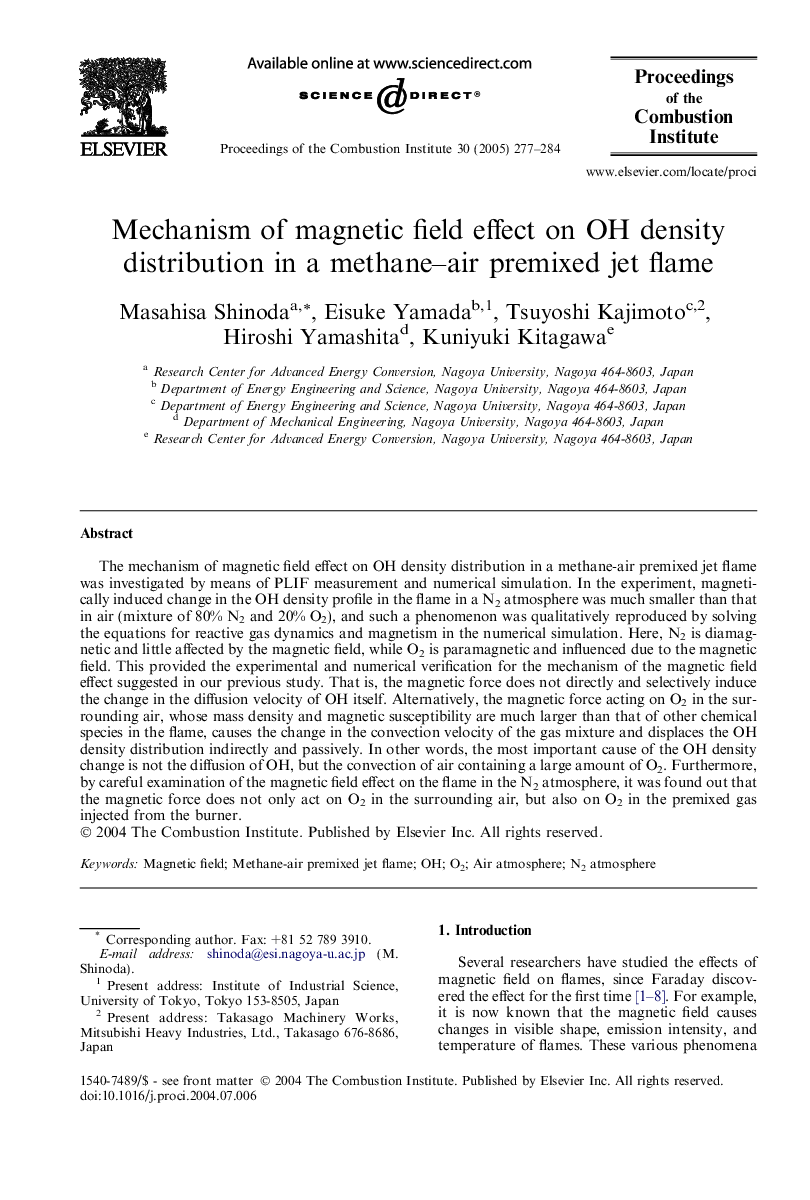| Article ID | Journal | Published Year | Pages | File Type |
|---|---|---|---|---|
| 9637345 | Proceedings of the Combustion Institute | 2005 | 8 Pages |
Abstract
The mechanism of magnetic field effect on OH density distribution in a methane-air premixed jet flame was investigated by means of PLIF measurement and numerical simulation. In the experiment, magnetically induced change in the OH density profile in the flame in a N2 atmosphere was much smaller than that in air (mixture of 80% N2 and 20% O2), and such a phenomenon was qualitatively reproduced by solving the equations for reactive gas dynamics and magnetism in the numerical simulation. Here, N2 is diamagnetic and little affected by the magnetic field, while O2 is paramagnetic and influenced due to the magnetic field. This provided the experimental and numerical verification for the mechanism of the magnetic field effect suggested in our previous study. That is, the magnetic force does not directly and selectively induce the change in the diffusion velocity of OH itself. Alternatively, the magnetic force acting on O2 in the surrounding air, whose mass density and magnetic susceptibility are much larger than that of other chemical species in the flame, causes the change in the convection velocity of the gas mixture and displaces the OH density distribution indirectly and passively. In other words, the most important cause of the OH density change is not the diffusion of OH, but the convection of air containing a large amount of O2. Furthermore, by careful examination of the magnetic field effect on the flame in the N2 atmosphere, it was found out that the magnetic force does not only act on O2 in the surrounding air, but also on O2 in the premixed gas injected from the burner.
Keywords
Related Topics
Physical Sciences and Engineering
Chemical Engineering
Chemical Engineering (General)
Authors
Masahisa Shinoda, Eisuke Yamada, Tsuyoshi Kajimoto, Hiroshi Yamashita, Kuniyuki Kitagawa,
